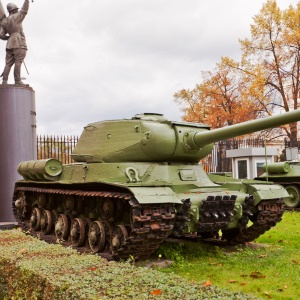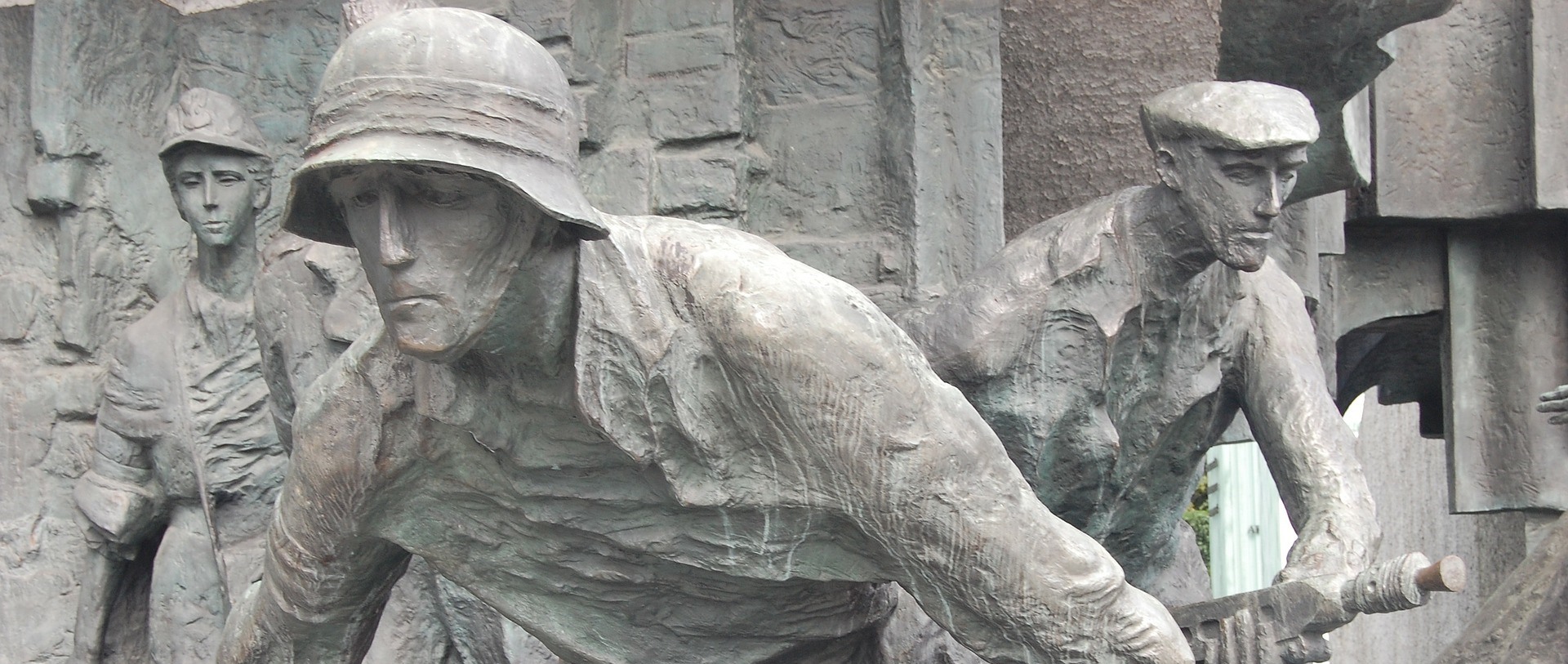
World War II
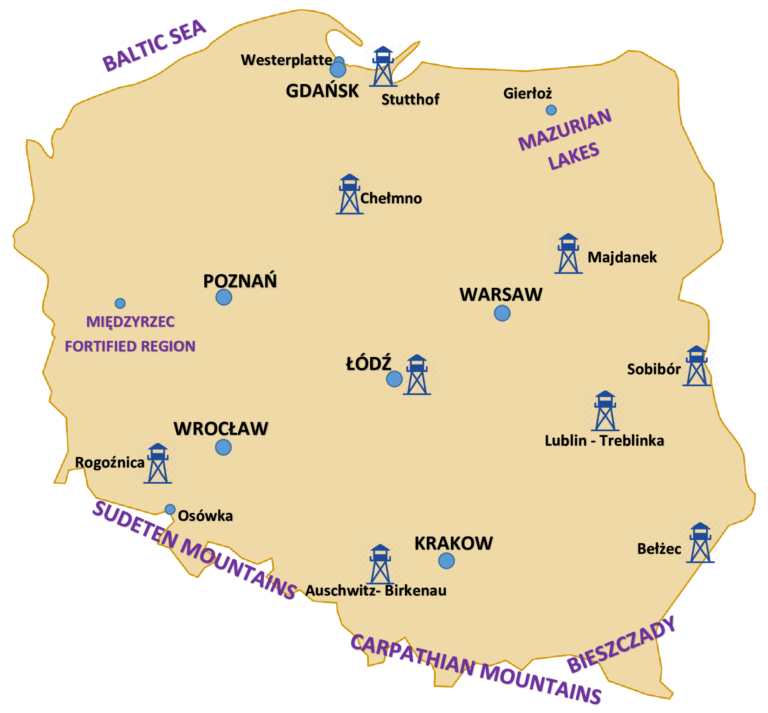
Poland was the first country invaded by Hitler and the place where the World War II began on 1st September 1939.
Most of Poland’s territory was affected by war and there are many sites throughout the country that bear witness of those tragic times.
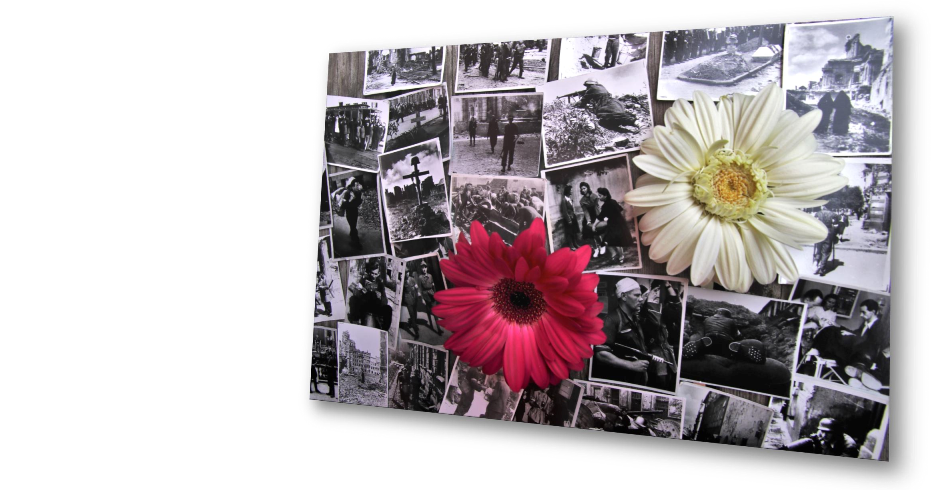
Westerplatte Peninsula
Where a German battleship Schleswig-Holstein, sailing into Gdansk harbor under the pretext of making a courtesy call, suddenly opened fire on the Polish Garrison on the early morning of 1st September 1939. For 8 days, 182 Polish Soldiers held off thousands of Nazi forces, supported by artillery, planes and naval units. The Monument to the Defenders of the Coast commemorates not only the Westerplatte garrison, but also other soldiers fighting against the Nazi army on other European coasts.
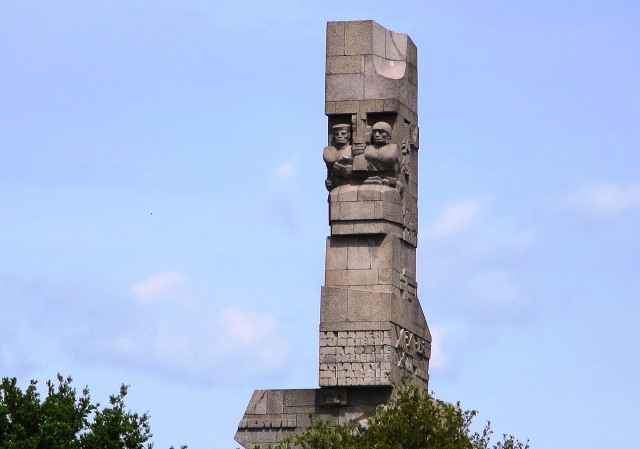
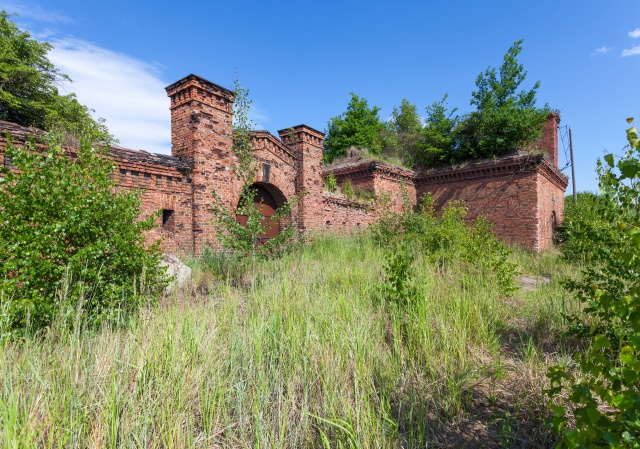
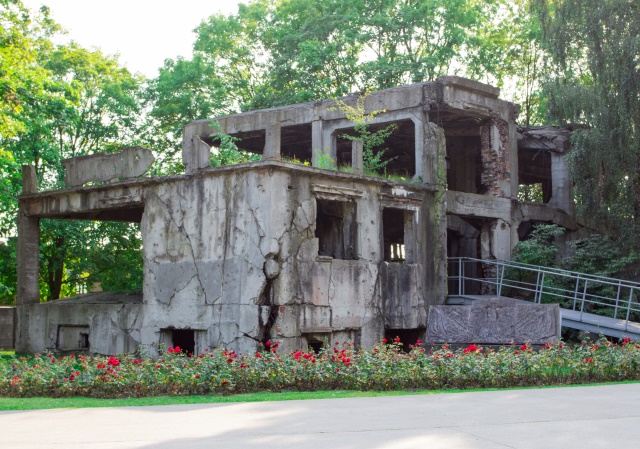
Museum of The Second World War in Gdansk
The permanent exhibition of 5,000 m2, located 14 meters under the ground, is one of the largest historical museum exhibitions in the world. It tells the story of the tragic experience of the Second World War, its roots and consequences on perpetrators and victims, on heroes and ordinary people. There are three main narrative blocks: “The Road to War”, “The Terror of War” and “The Long Shadow of War” presenting the Polish experience of the war in the European and International context.
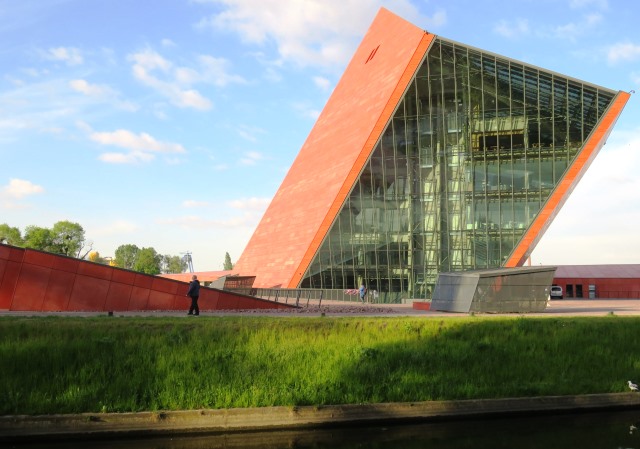
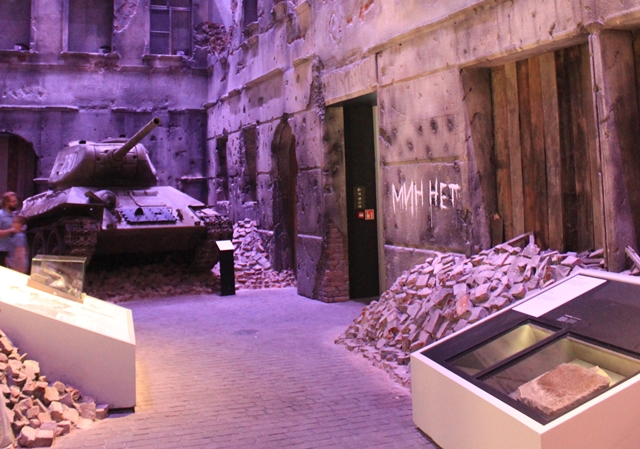
Stutthof
Nazi concentration camp, now a museum-monument.
A 40-km drive east of Gdańsk takes you to Stutthof, a former Nazi death camp, where over 85 000 people perished. The gas chamber, crematorium and prisoners’ barracks have been preserved. Founded in September 1939, evacuated in 1945, Struthoff was the first concentration camp Germans built in Poland and the last to be liberated.
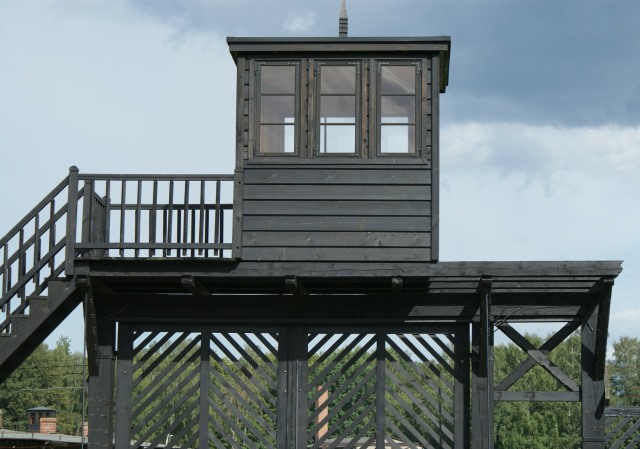
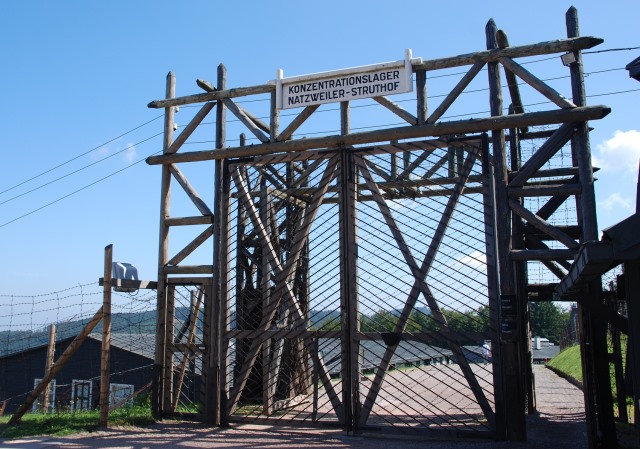
Chełmno
Memorial to victims of Nazi death camp where 250 000 Jewish perished.
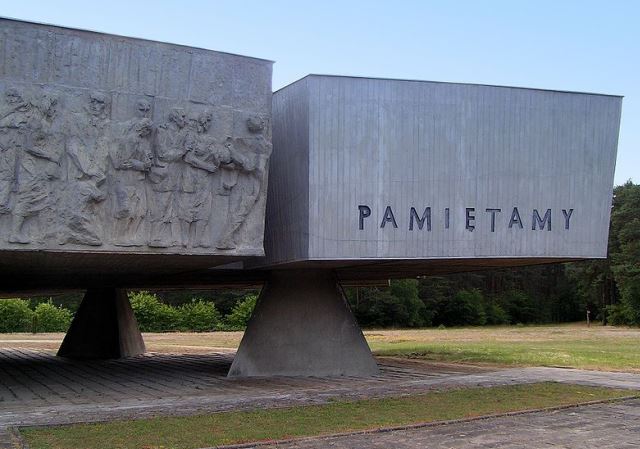
Source: Wikipedia
Wolf’s Liar / Gierłoż in Mazury Lake District
Hitler’s headquarters during world War II. Approx. two thousand people lived and worked at Wolf’s Lair at its peak. The complex was blown up and abandoned 48 hours before the arrival of Soviet forces, on 25 January 1945.
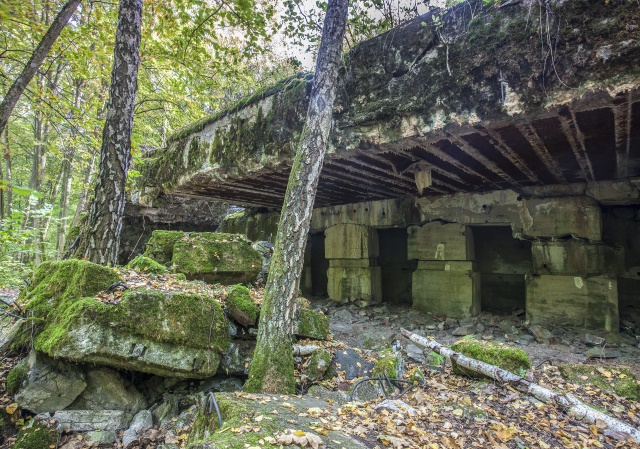
Warsaw Uprising Museum
The Museum is a tribute of Warsaw residents to those who fought and died for independent Poland and its free capital. The multimedia exhibition reflects the atmosphere of 63-day long fighting and everyday life of the civilian population during the 1944 Rising. It also describes the occupation and post-war communist terror.

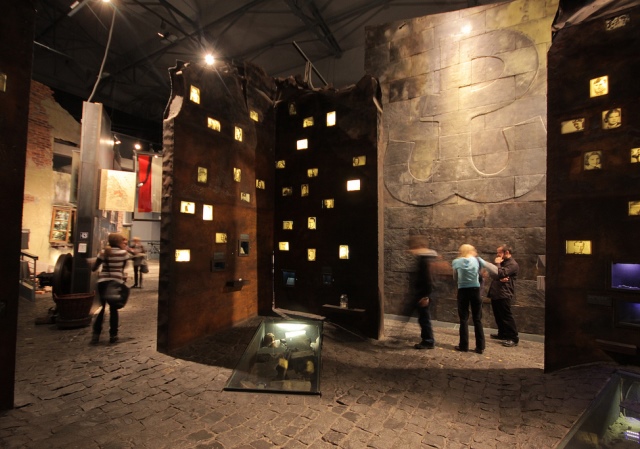
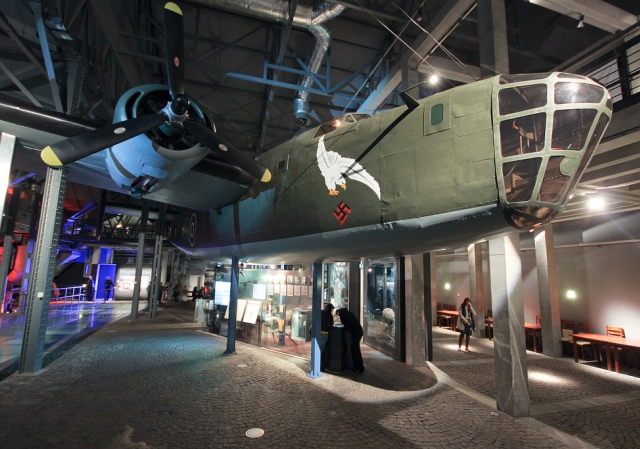
Treblinka
A former Nazi concentration camp, now a memorial. Drive 100–km north–east from Warsaw to visit the site of Treblinka Nazi death camp, where over 800 000 Jews from all over Europe perished in the gas chambers.
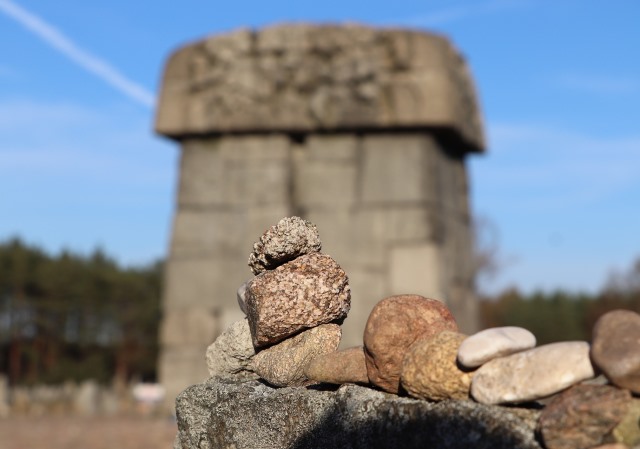
Majdanek
A Nazi concentration camp. Founded in 1941, this death camp claimed 400 000 victims, shot or murdered in gas chambers. Now visitors can see the prisoners’ barracks and monument – a mausoleum containing ashes of victims.
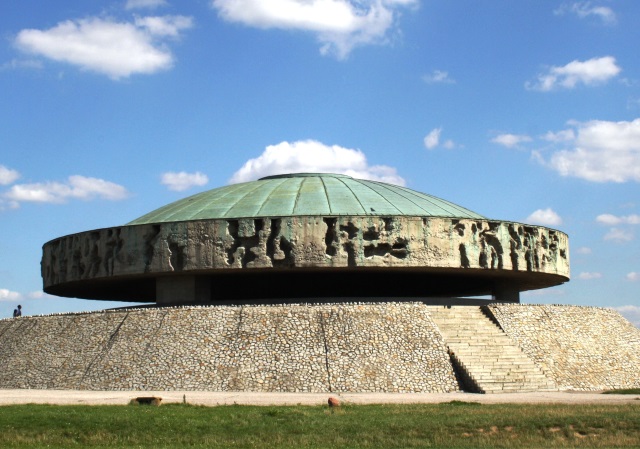
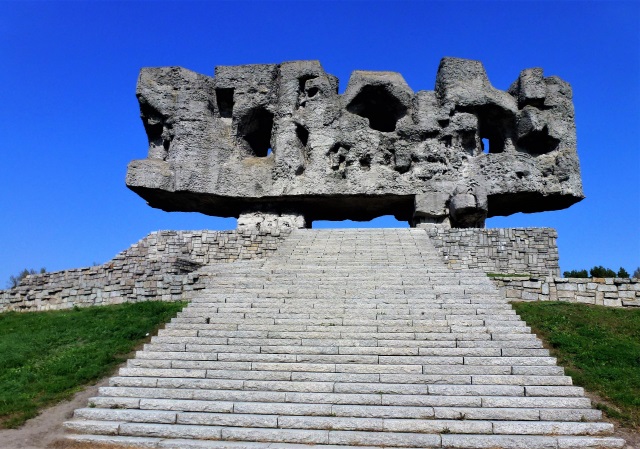
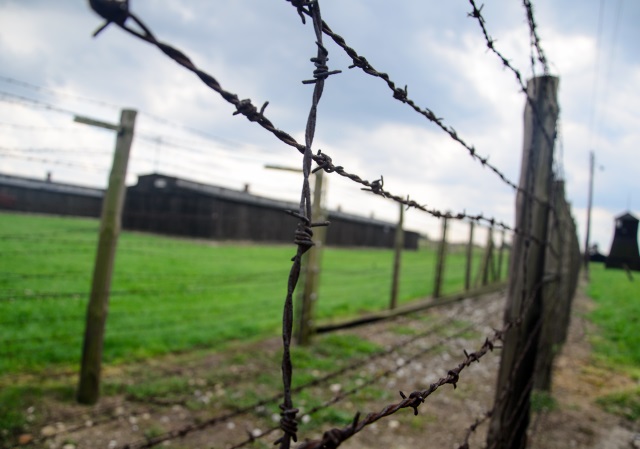
Sobibór
Nazi German extermination camp, located in a forest near the village of Sobibór, where over 250 000 Jews were killed in gas chambers from May 1942 until October 1943. Now a monument.
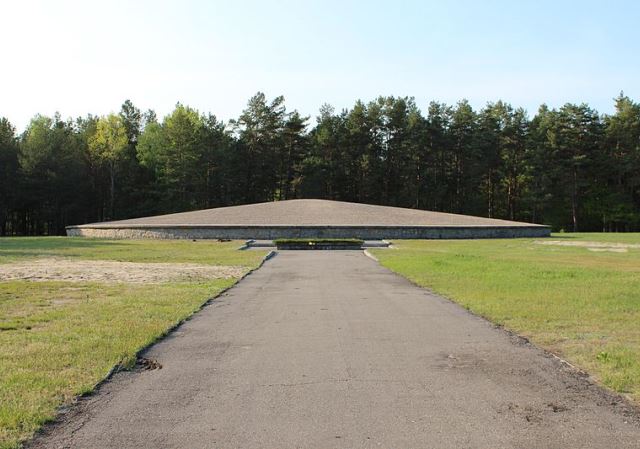
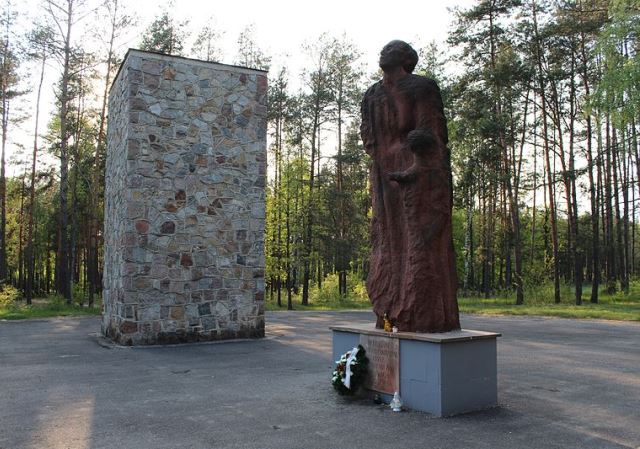
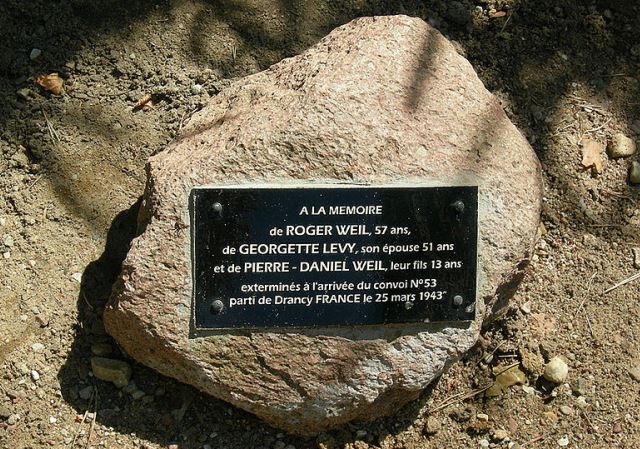
Pictures Source: Wikipedia
Bełżec
A death camp where 600 000 Jewish perished, now a memorial.
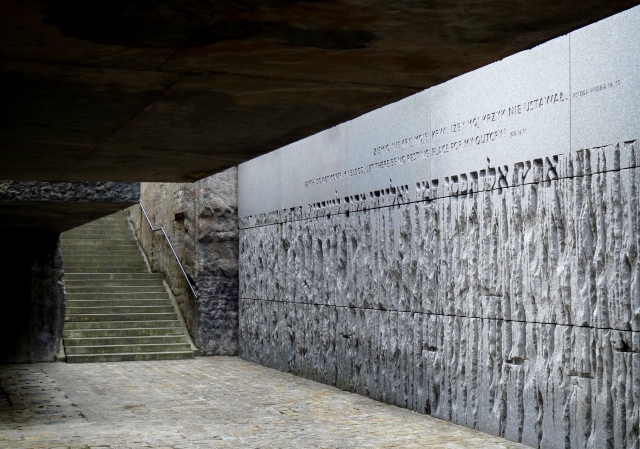
Łódź – Radegast Station
The former Ghetto area, Radegast Station. A historic railway station in Łódź, during the WWII situated just outside the Łódź Ghetto – one of the biggest Jewish ghettos in German-occupied Europe. The station served as the Umschlagplatz for transporting Jews to the extermination camps during Operation Reinhard.
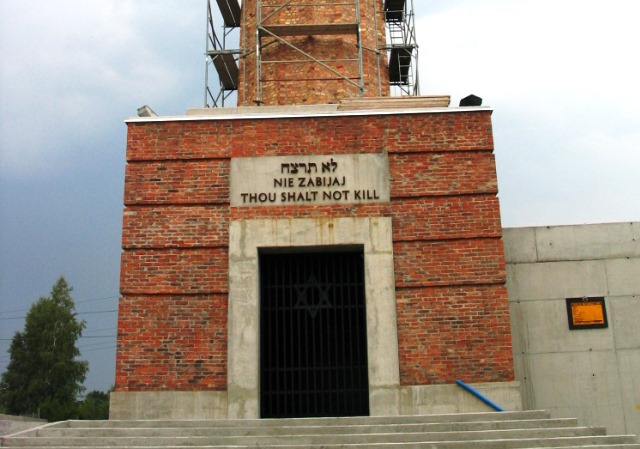
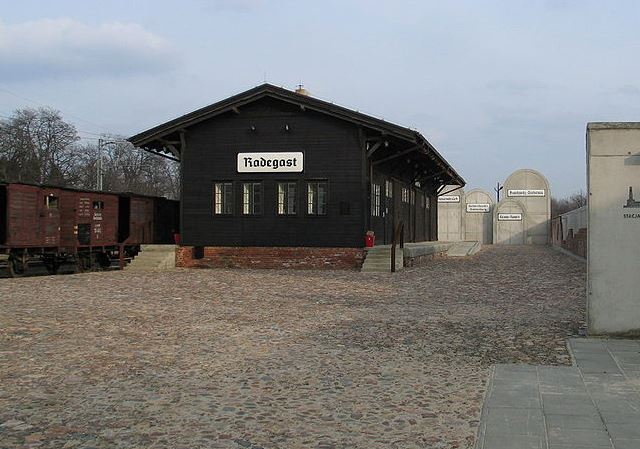
Pictures Source: Wikipedia
Łódź – Kinder-KZ Litzmannstadt
Nazi German concentration camp for Polish Christian children in occupied Łodź during the World War II. According to the assumptions, the camp was to be a place of detention for Polish youth caught in petty crimes, homeless or whose parents were arrested or executed. In the years 1942 – 1945 several hundred children died there including those under 6 years of age.
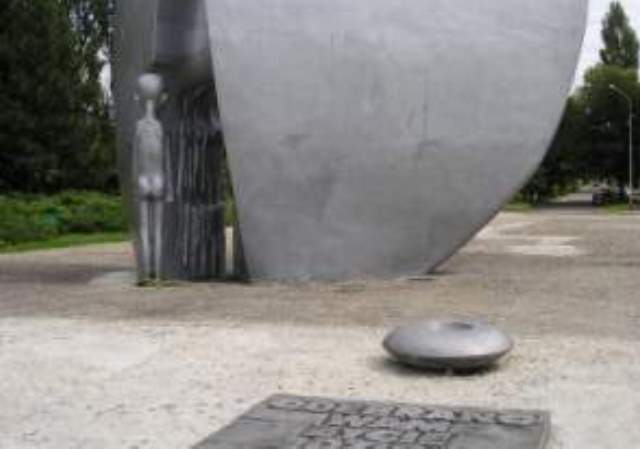
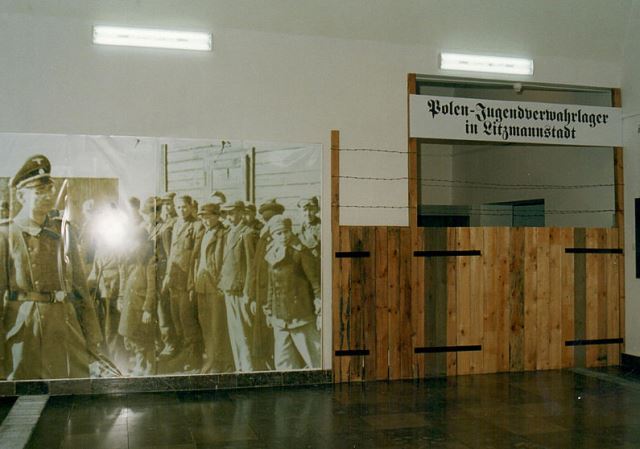
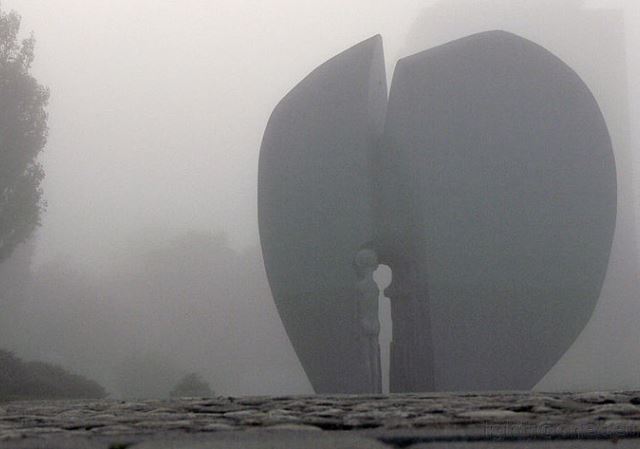
Pictures Source: Wikipedia
Auschwitz-Birkenau (Oświęcim)
A former Nazi concentration camp, UNESCO site. A grim reminder of Nazi terror and the holocaust. Auschwitz, built on the outskirts of the Polish town Oświęcim – now the Museum of Martyrdom – consists of brick barracks with shocking exhibits of tons of hair, shoes, glasses and other belongings wrested from the victims, while nearby Birkenau has hectares of wooden barracks and gas chambers.
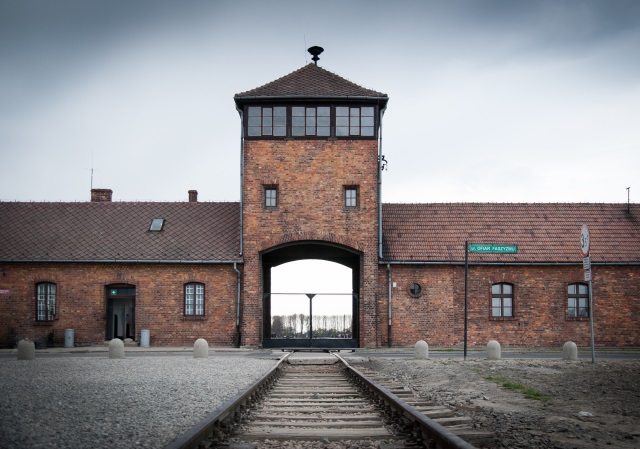

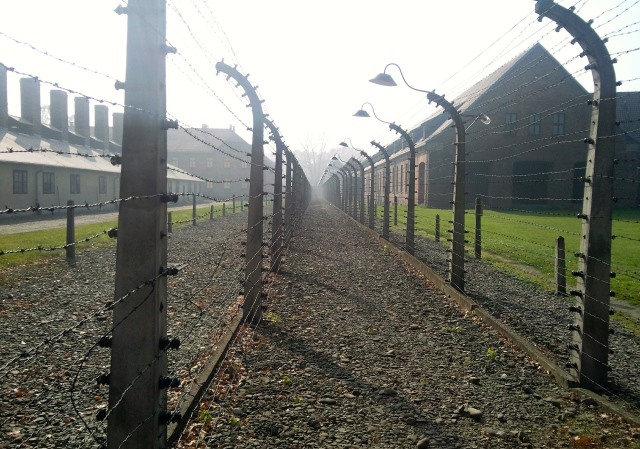
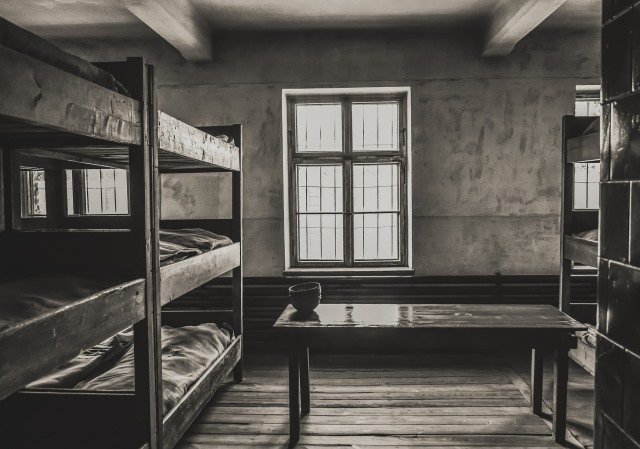
Reise Complex
Osówka & Walim – Hitler’s subterranean munitions factories.
Hitler’s excavations of the underground galleries near Osówka and Głuszyca in the Sowie Mountains began in 1943, most probably in order to set up a secret weapons factory. Approximately 1700 meters of a subterranean trail consisting of passages and caverns can be visited. Meanwhile another complex of underground galleries and shafts was built near Walim towards the end of WWII.
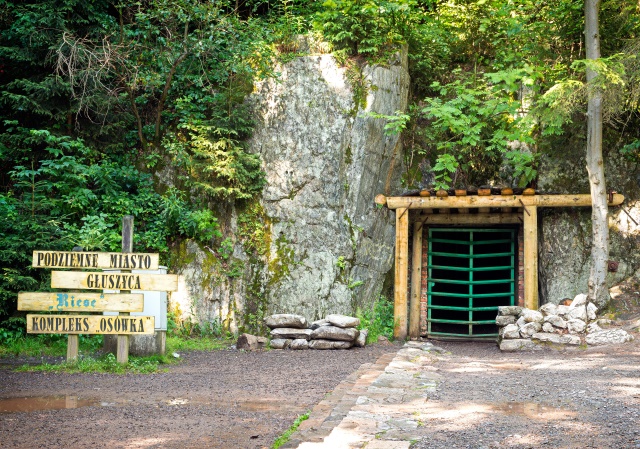
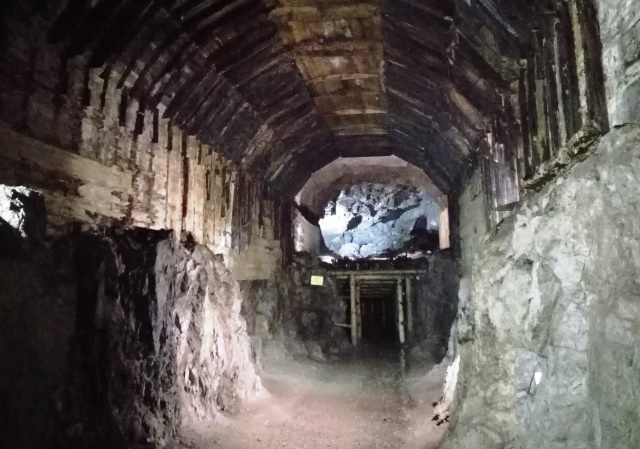
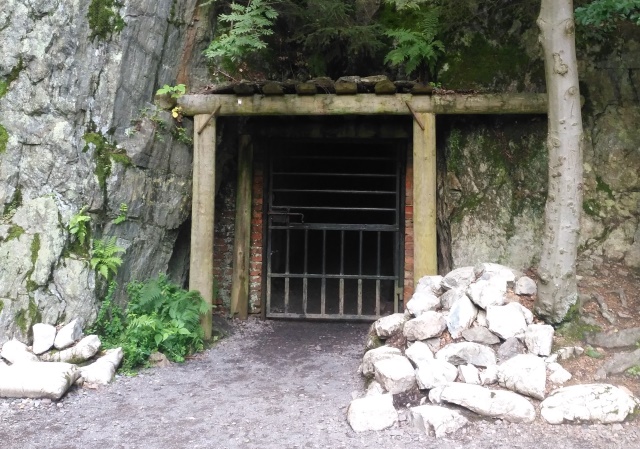
Rogoźnica
Gross – Rosen, concentration camp, now Memorial to the Victims.
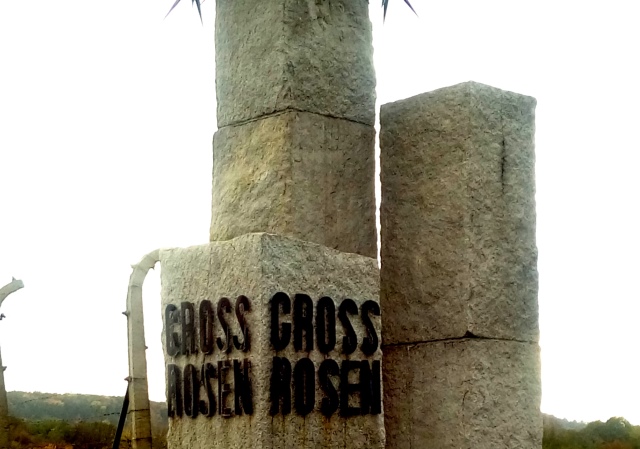
Międzyrzec Fortified Region
The Miedzyrzecz Fortified Region is a unique fortification system of around 100 defence structures and underground tunnels built between the First and Second World War and additionally extended during WWII. The total length of 30km at a depth of 40m featured workshops, railway stations, engine rooms and barracks fitted with lighting system, ventilation, waterworks and sewage system. It is considered to be one of the largest and the most interesting systems of this type in the world. Longer version of the tourist route is 2,5 km and it takes 2.5 hours to go through. The short route is 1,5 km long and takes 1.5 hours.
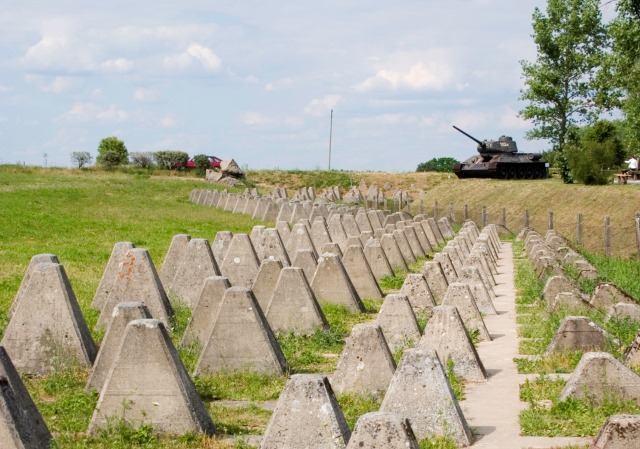
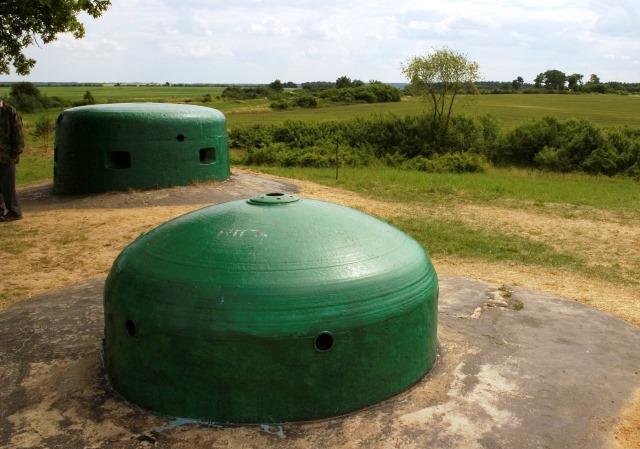
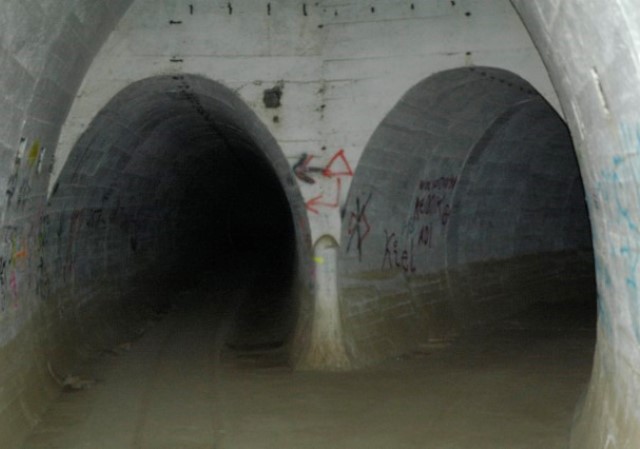
Pictures Source: Wikipedia

